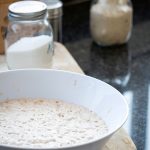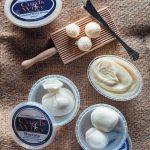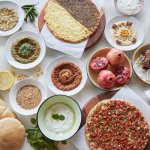Words: Bianca Muller
A spoonful of honey in your tea or a drizzle over your pancakes sounds like a sweet, sweet morning, doesn’t it? The goodness of honey knows no end, and it even has some health benefits too. Learn all about the liquid gold condiment in this honey 101 guide!
Honey 101
How honey is made
We’ll confess – we might have reached for the jar of honey in the pantry numerous times before, yet the thought of how it reached the golden and delicious end result hasn’t crossed our minds all too often. How does it go from nectar to an edible syrupy substance? Simply put, bees store nectar in their ‘crop’ which undergoes a process of regurgitation for it to end up in a honeycomb. By fanning their wings, the bees help with the process of evaporation, and voila! Honey as we know it takes form. What many don’t know is that the type of flower that bees frequent influences factors such as the honey’s taste and colour, hence the different types on the market. Clover honey, acacia honey, orange blossom honey and wildflower honey are only some of the many varieties that are available.
A sweet history
The delightful food substance has long been used as a natural source of sweetness. An approximately 8000-year-old cave painting in Spain is proof that honey has been sought-after for centuries. In the cave, someone is illustrated collecting honey from a bee’s nest. In ancient Egypt, honey was just as cherished. It was used as a sweetener in baked goods, as a temple offering and for mummification. It was even buried with the deceased so they’d have a sweet transition into the afterlife.
Uses of honey today
Who needs sugar in your tea when you can have honey? A favourite in many households the world over, honey still offers an array of uses today. We might commonly use it to sweeten beverages, to drizzle over snacks such as fruit or muesli, or to bake up a storm in the kitchen. But the sweet substance has also gained popularity in the skincare industry thanks to its humectant and antimicrobial properties. Find it in lip balms, moisturisers and masks.
Health benefits
It’s not only the delicious taste that makes honey worth keeping in your pantry. The gold syrup holds many health benefits too. It’s packed with antioxidants which may reduce the risk of high blood pressure, strokes and heart attacks. Honey may also be better at treating coughs than medicine, and honey-based treatment for wounds has been used for years. Raw and unpasteurised honey offers the most benefits – bear this in mind when making your pick.
Heating honey: While adding a teaspoon to tea is something that many people enjoy, the high temperature of the water destroys the beneficial nutrients that it contains. If reaping the benefits is what you’re after, wait until your tea has reached a cooler temperature before adding the honey.
Did you know? 1 tbsp honey contains ~64 calories, ~17.2 grams of sugar and no fat.
Check out some of these recipes using honey:
Honey almond upside-down cakes
Balsamic-honey shredded beef buns
Made any of the recipes in our honey 101 guide? Tag us @foodandhomesa #cookingwithFH on Instagram
Feature image by Art Rachen on Unsplash










